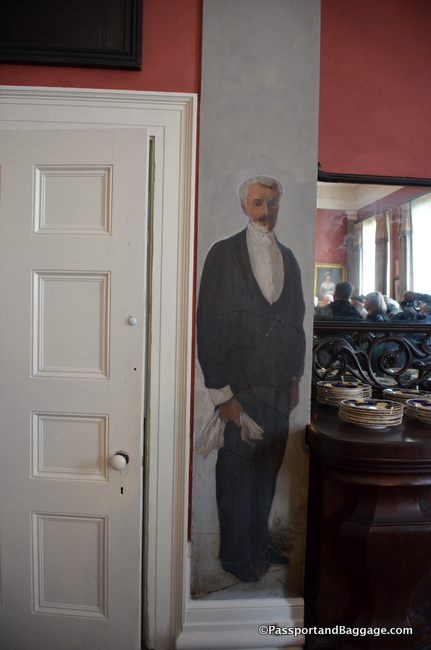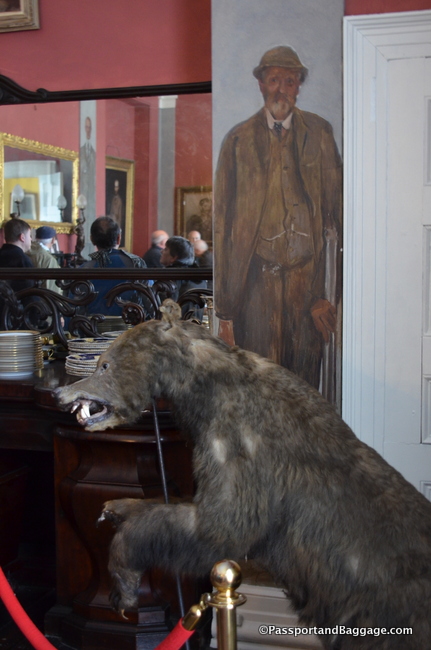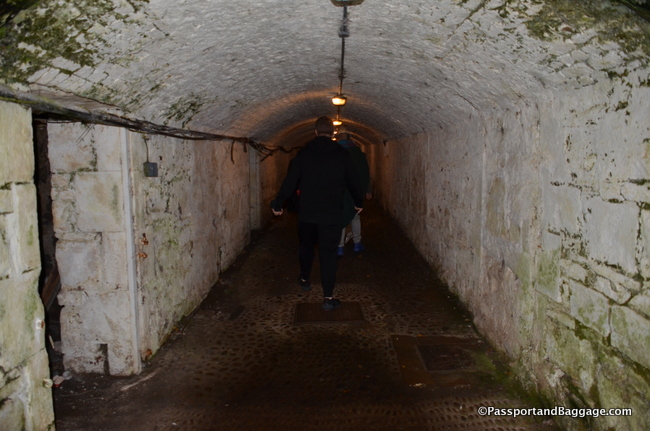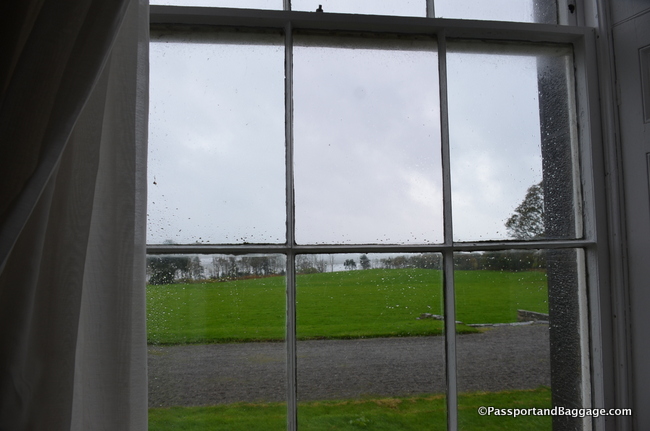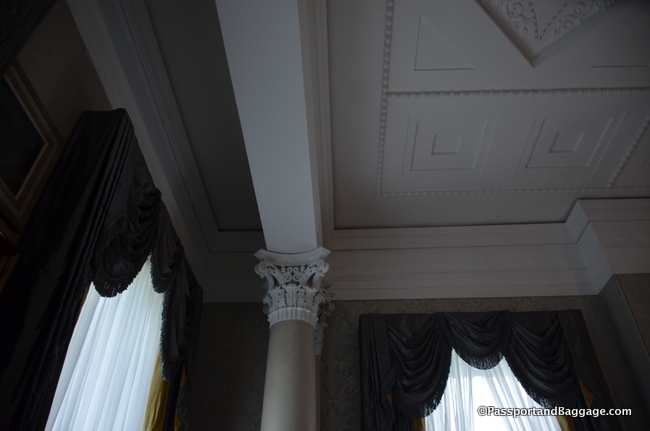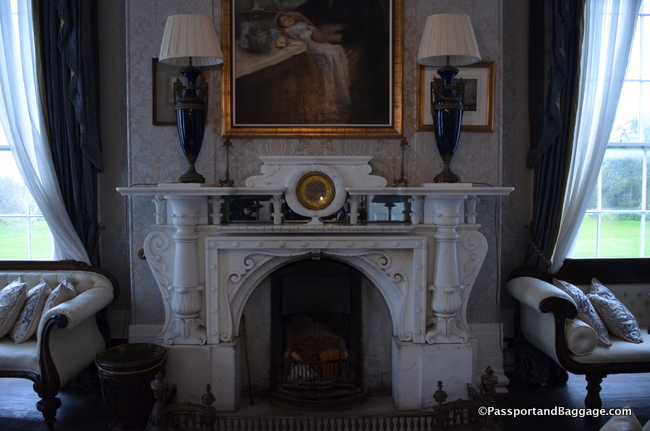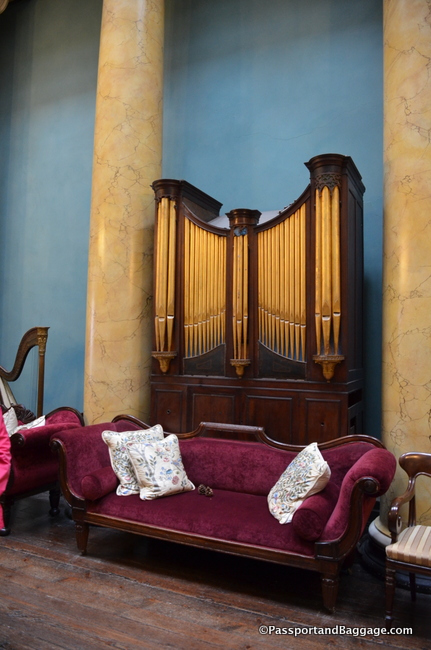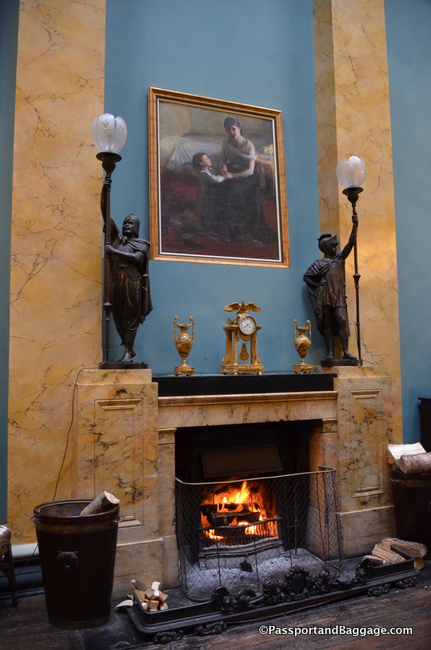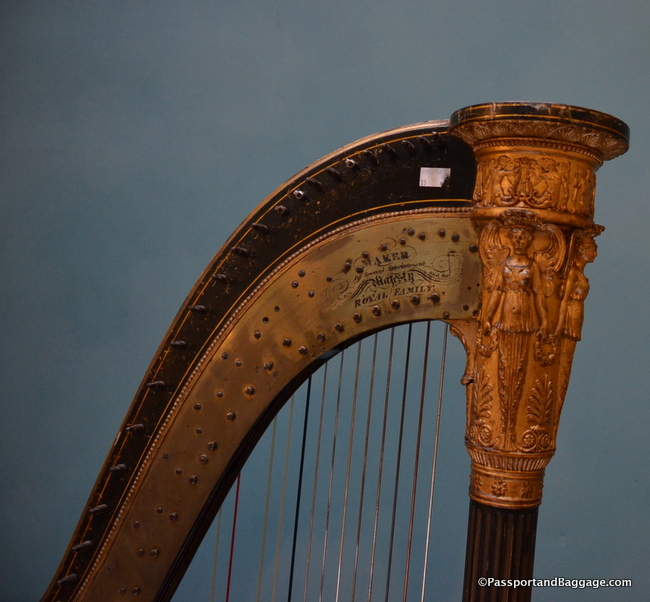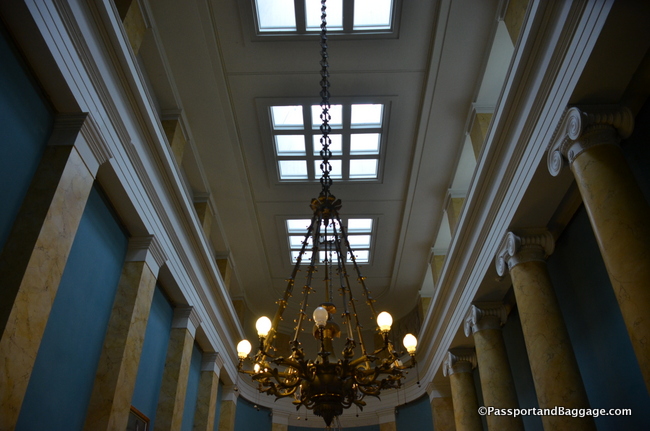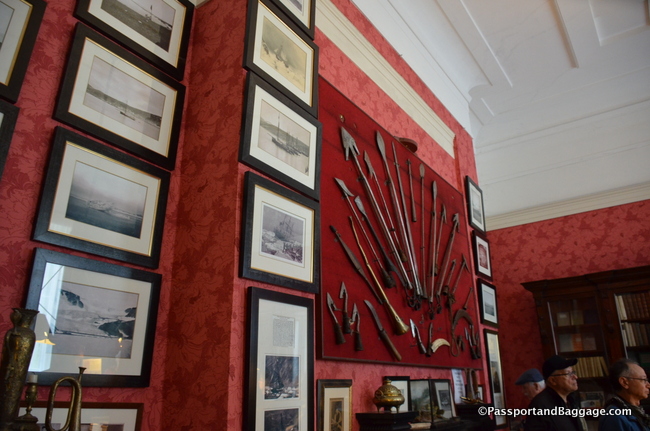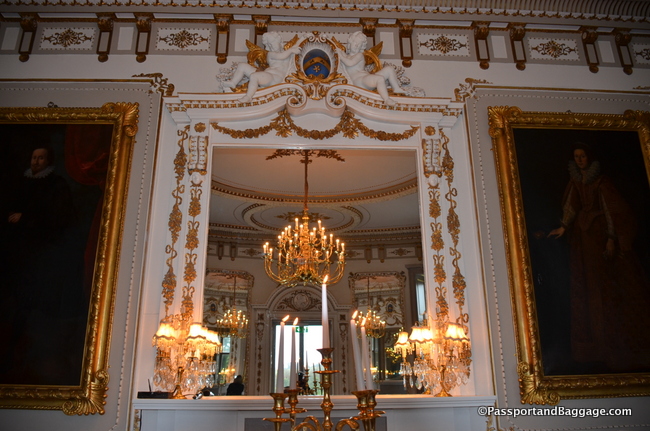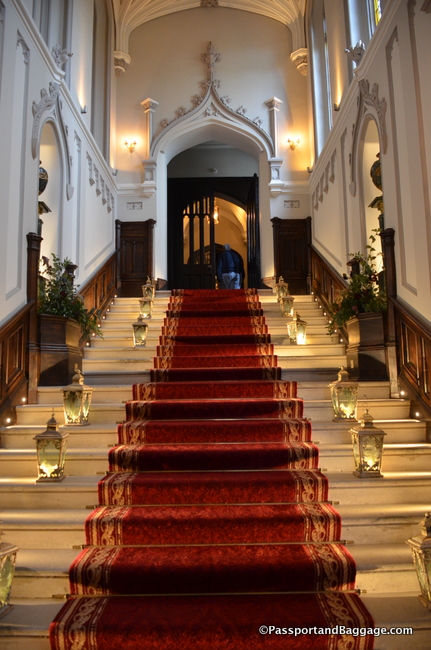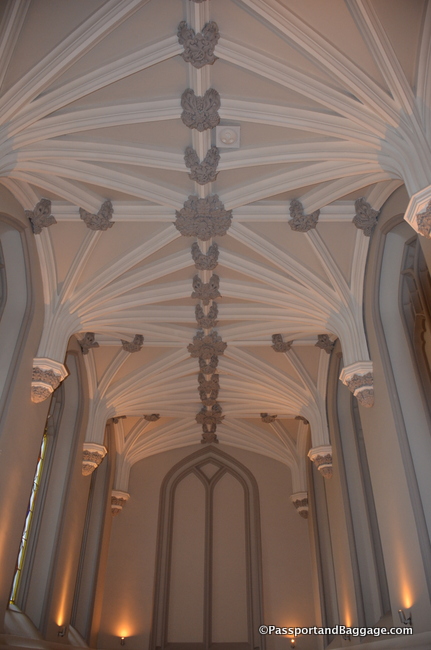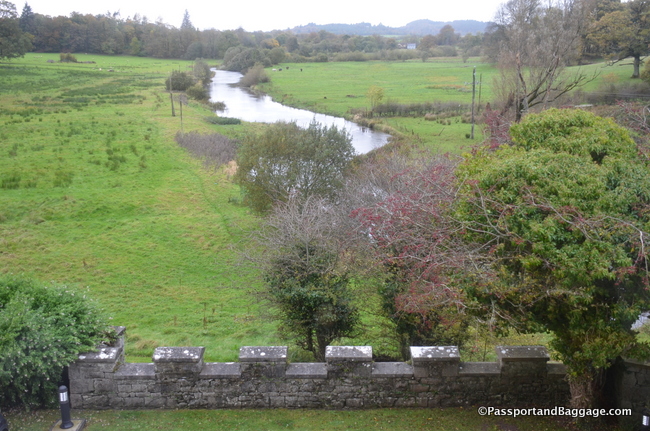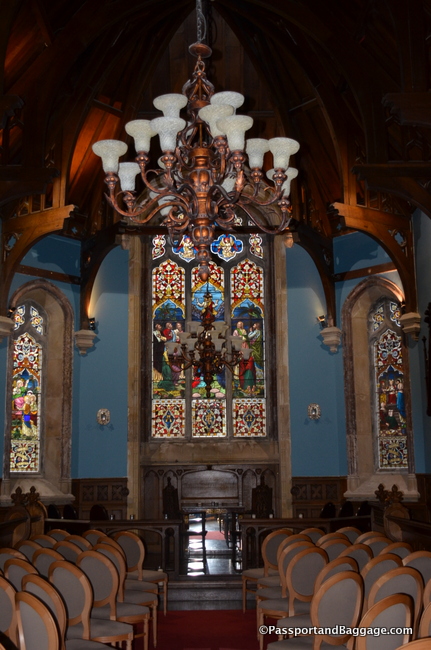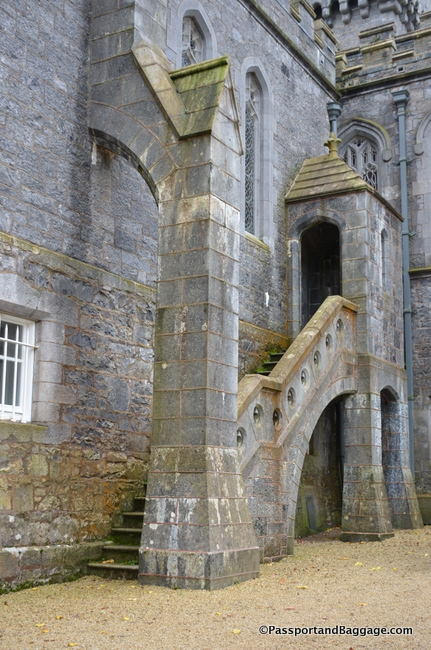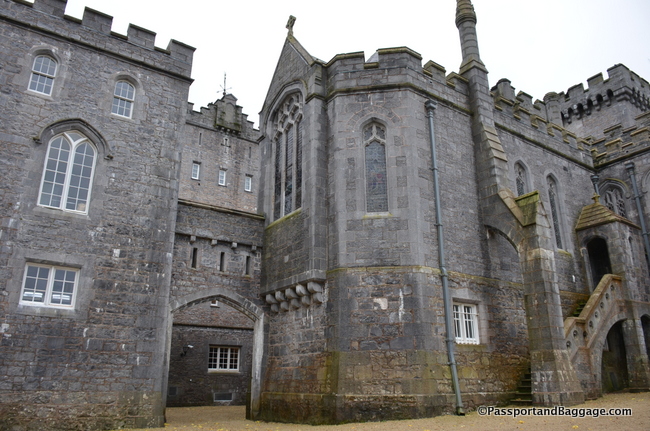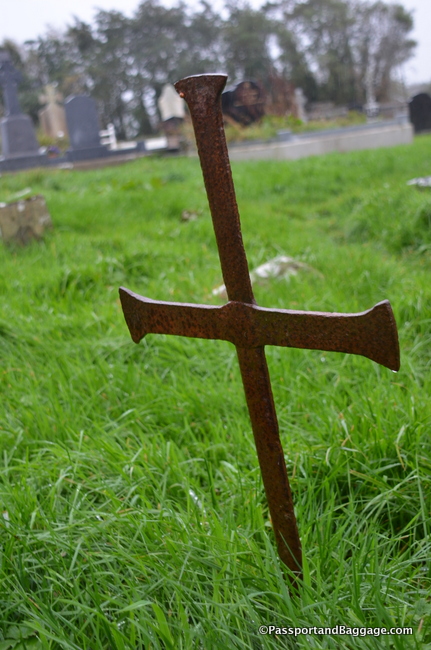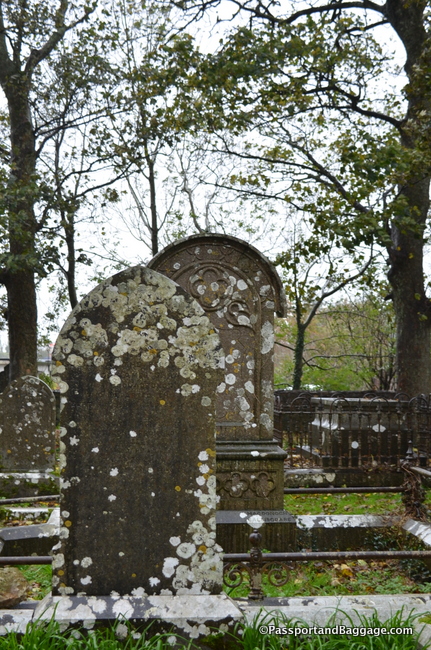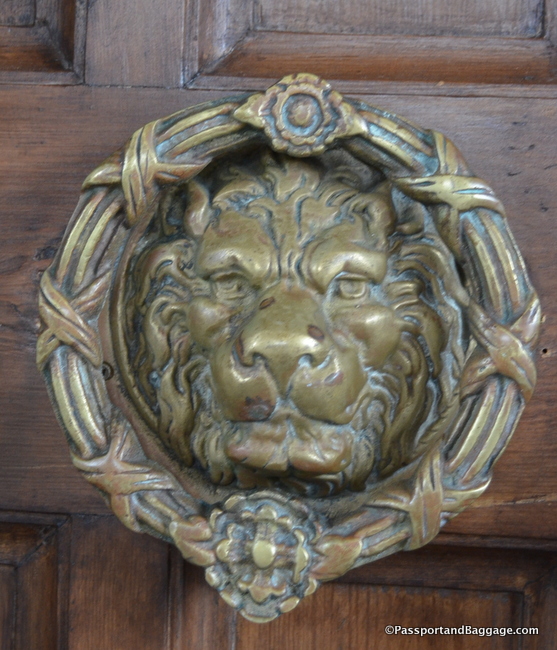October 9, 2018
You know you are in for an adventure when the guide to the house meets you at the road and tells you how you are about to see the ugliest house in Ireland.
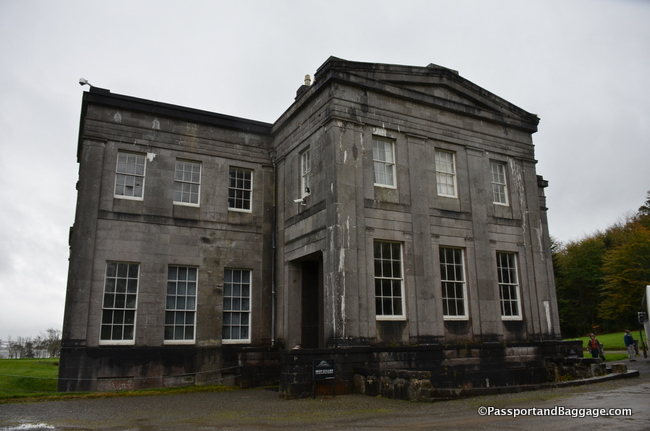 It has more to do with a penny-pinching rich man and an excellent architect not agreeing on a budget.
It has more to do with a penny-pinching rich man and an excellent architect not agreeing on a budget.
Lisadell House was designed by Francis Goodwin of London for Robert Gore-Booth. The men were 4000 pounds sterling apart from each other on an agreed overall costs for the building of the house. The owner seems to have won by cutting off his nose to spite his face.
The austere Grecian-Revival house is made of grey limestone (a budget-cutting measure) that makes it so dour from the start. The grey limestone in the commonly grey weather of the area does nothing to improve one’s mood, to say nothing of the fact that limestone never develops a patina, so 200 years later it still looks grey and new.
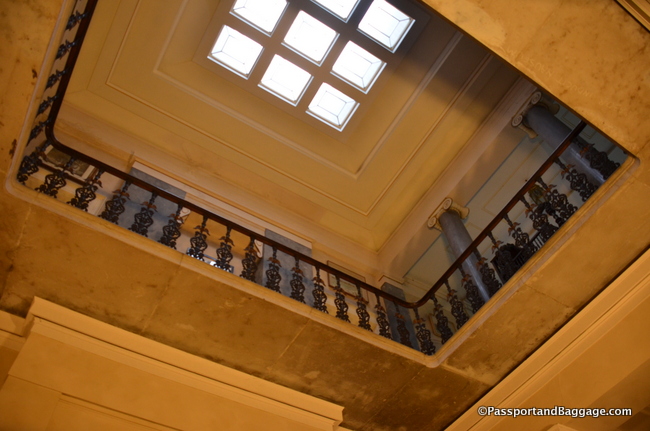
This portion of the house is actually grey concrete. It only appears yellow as the house was so dark without a flash the true color does not come through
The house today is no longer in the hands of the family, a very interesting one at that, so shows neglect and houses such a mish-mash of furniture that the dourness continues on the inside.
The ornamentation inside is simple and dour as well. The plaster ceilings look industrial, almost as though the plasters weren’t being paid enough and decided to play a joke on the owner.
Count Casimir Markievicz, the artist son-in-law of the 5th Baron, painted the pilasters early in the 20th century with a full-length series of portraits of members of the family, as well as the games keeper and butler.
From Sir Henry Gore Booths diary 1807
“We were making a beeline for the camp…when there was revealed the fresh track of a bear…
I put in Lassie and she took up the trail briskly. Thomas( Kilgallon) carried the cartridges and telescope. Of a sudden I observed Lassie at the foot of a hillock…when the bear without any warning appeared at the top of the hill.
I delivered a bore from the express rifle…the bear subsided on his tail with a growl. We had tracked the bear three miles and had been obliged to run most of the way.
The bear which we skinned where he lay turned out to be an unusually large one and appeared to be a great age”
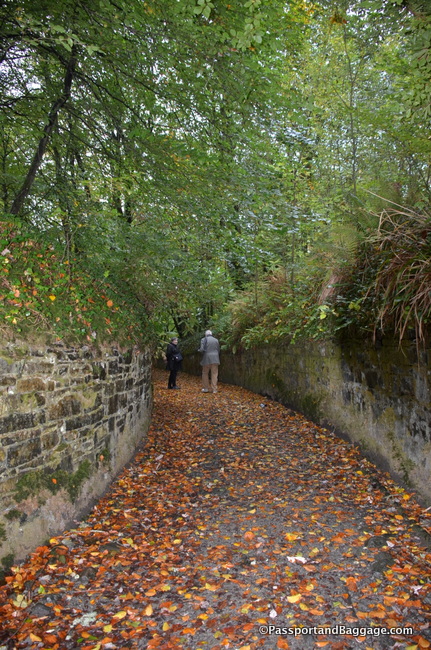
The Baron did not want to ever see the servants so the came onto the property through a sunken trail through the woods
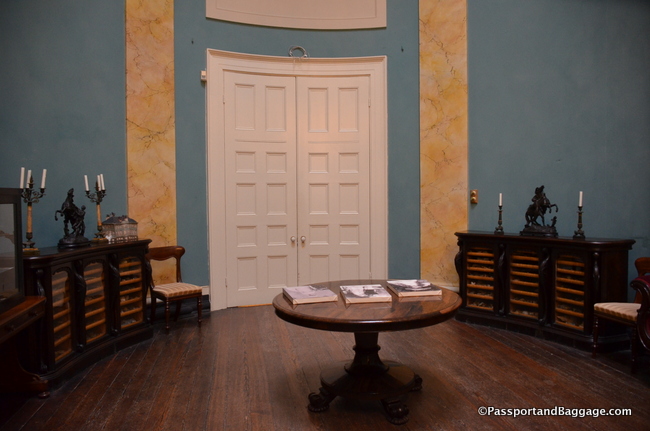
The two cabinets that flank the door were so perfectly Victorian, holding shells, and shells and more shells.
Lissadell was bleak, but our guide was a ray of sunshine and here is to his retirement, something he will accomplish this year. It is appropriate that his grandmother and mother both worked in the home, giving him a knowledge he imparted on us that was spectacular.
MARKREE CASTLE
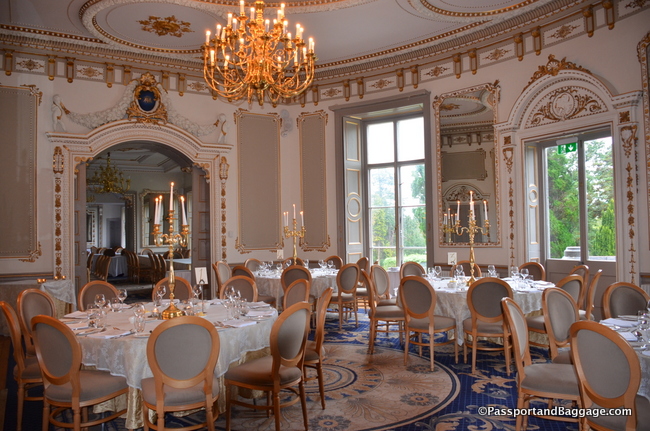 Lunch was laid for us at Markree Castle. This was originally a 17th-century home, it was rebuilt in the 18th Century as a three story block house.
Lunch was laid for us at Markree Castle. This was originally a 17th-century home, it was rebuilt in the 18th Century as a three story block house.
In 1802 Joshua Cooper commissioned Francis Johnston to enlarge the house and transform it into a castle of the early symmetrical kind.

During the renovation and change to a hotel, this fireplace and its lovely surrounding tiles were found in a box in a shed.

While many of the original wood floors are now protected by carpets the beautiful woodwork pokes it head out here and there.
Johnston extended the front of the house to more than twice its original length to form a new garden front and an Irish-battlemented tower.
Mrs. Alexander, the hymn writer, stayed at Markree. It is Markree she was possibly thinking of when she wrote of The rich man in his castle in All Things Bright and Beautiful.
The castle has since been tastefully turned into a hotel keeping the same lines, and ornamental plaster, but none of the furniture.
DRUMCLIFF CHURCH
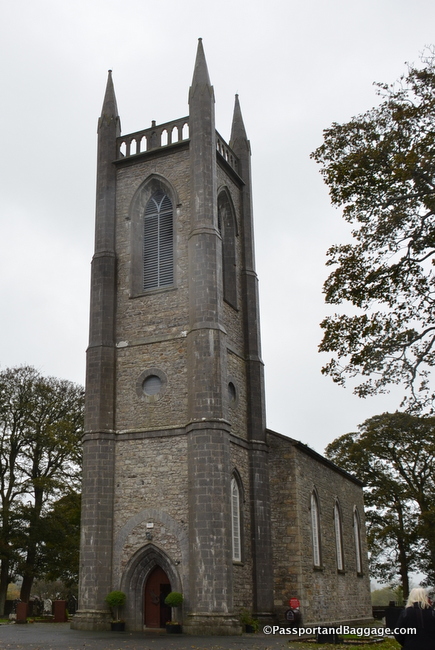 Drum Cliff Church is where William Butler Yeats and his wife Georgie are buried. Yeats Grandfather was rector of the church. Yeats died and was buried in France in 1939. He was moved to Drumcliff in 1948 as he had originally wished.
Drum Cliff Church is where William Butler Yeats and his wife Georgie are buried. Yeats Grandfather was rector of the church. Yeats died and was buried in France in 1939. He was moved to Drumcliff in 1948 as he had originally wished.
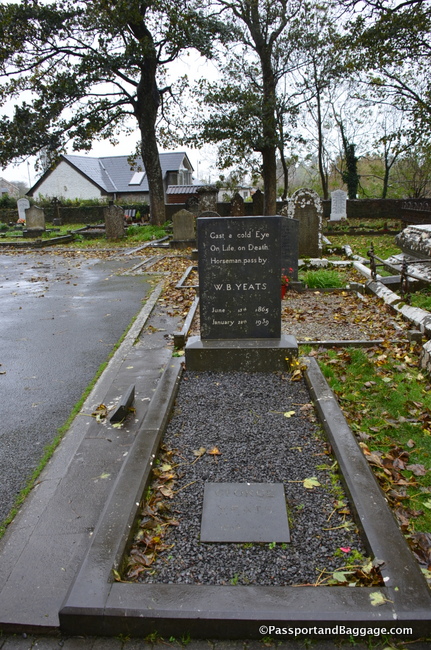
Yeats grave is marked with a simple headstone with the inscription, “cast a cold eye on life, on death, horseman, pass by.” This was Yeats’ self-penned epitaph together with the instructions that the grave consist of “no marble, no conventional phrase”.
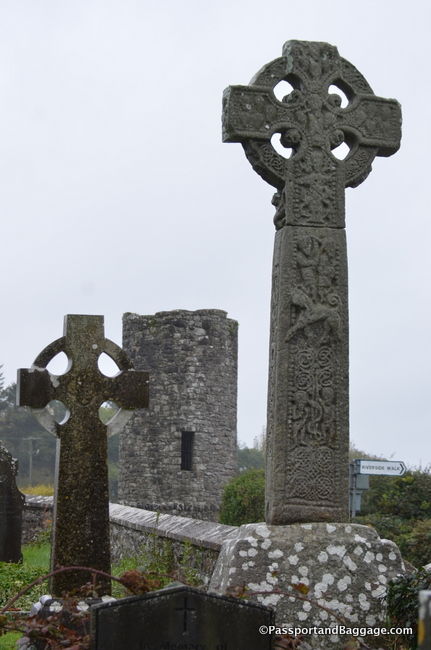
A ruined 10th or 11th century round tower, the only one known in County Sligo, The round tower was struck by lightning in 1396.
The High Cross (on the right of this photo) dates back to the 11th century. On the west face, the subjects include the Presentation in the Temple and the Crucifixion. The east face bears Adam and Eve, Cain and Abel, Daniel in the Lions’ Den and a Lion in high relief. At the head is possibly Christ in Glory. The stonemason seems to have portrayed a camel on the cross which is an unusual feature. The narrow edges are also richly carved with ornament and figure carving. The south side of the shaft features the only icon of the Virgin and Child on an Irish High Cross.
PARTING SHOTS

